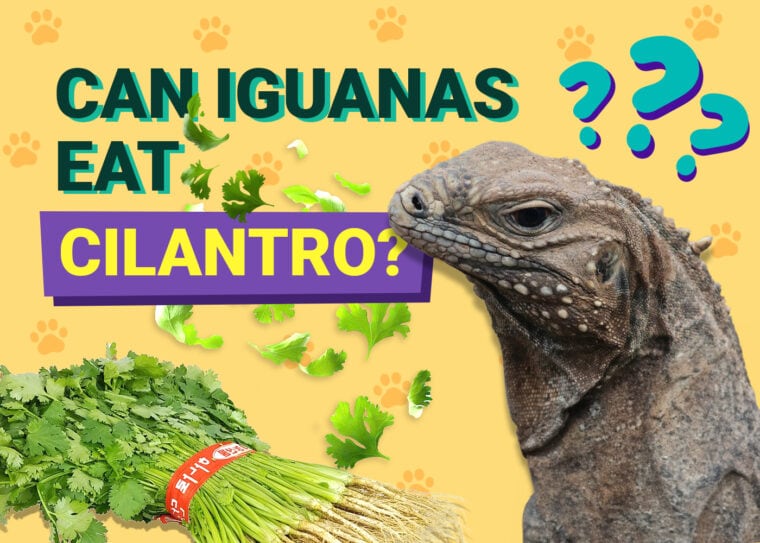
Feeding our pets the right food is one of the most important things we can do to make sure they stay healthy. While domestic pets like dogs and cats have a wide variety of nutritious options available, feeding an exotic pet like an iguana can be more complicated. You may know that iguanas eat a plant-based diet, but does that mean all types of plants are safe?
Making sure your iguana has variety in their diet is one way to ensure they get all the nutrients they need. But what foods are safe to feed and which ones should you avoid? For example, can iguanas eat cilantro? Iguanas can eat cilantro but only occasionally and in small amounts. Read on to learn why cilantro is okay in moderation as well as some more details about what a healthy diet for an iguana should look like.
Cilantro for Iguanas: The Good and Bad
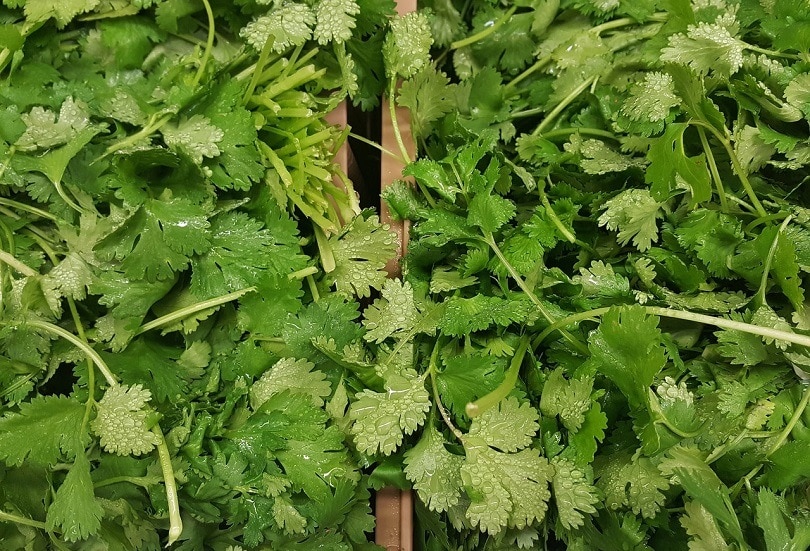
Cilantro is a widely available fresh herb commonly used in cooking. It’s a good source of several vitamins and minerals for both humans and iguanas. While cilantro can be healthy, iguanas shouldn’t eat too much of it because it contains oxalates.
Oxalates are a compound that binds with calcium in the iguana’s body, which can make it harder for the iguana to absorb this vital mineral. Long-term ingestion of foods containing oxalates can lead to nutritional deficiencies and kidney problems in iguanas. Besides cilantro, some other common oxalate-rich foods to be aware of include:
Like cilantro, these foods should also be fed in small amounts only.
Feeding an Iguana: The Basics
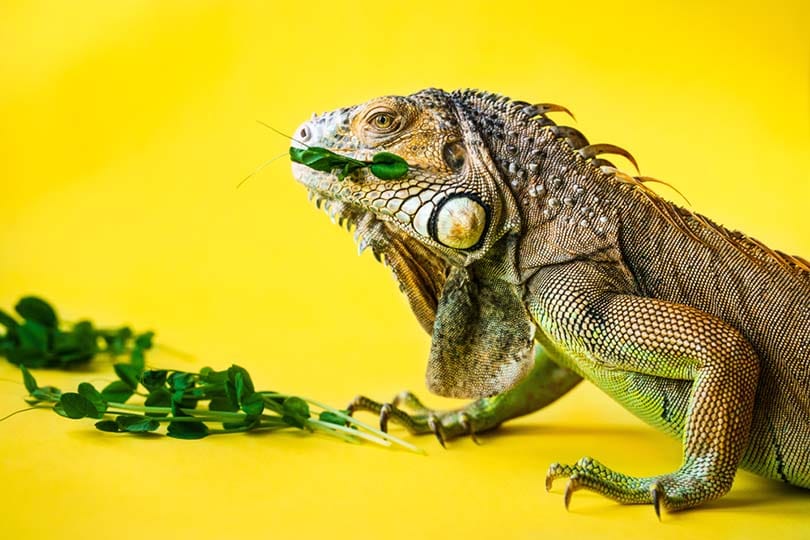
In the wild, iguanas are pretty strict herbivores, feeding on leaves, flowers, and some fruit. Pet iguanas should be fed primarily plant foods, although some veterinarians are okay with 5%-10% of their diet being a commercially formulated iguana diet.
Ideally, 80%-90% of the iguana’s daily diet should be made up of vegetables, with the other 20% or less being fruit. Of the vegetables, 40%-50% should be dark, leafy greens such as the following:
Other vegetables that can make up the additional 30%-40% of the iguana’s diet include:
Fruits that are safe for iguanas include:
Iguanas will also enjoy snacking on edible flowers as treats, such as hibiscus, carnations, and geraniums. Make sure the flowers are free of any bug sprays or artificial fertilizers before feeding. Don’t feed just any flower to your iguana as many are toxic. When in doubt, ask your vet first!
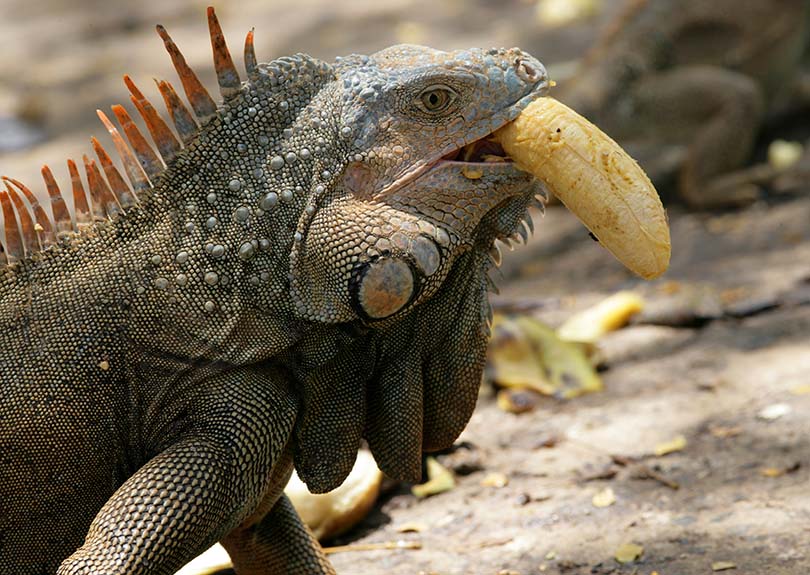
A Word About Protein
Iguanas can’t tolerate high protein diets and should only rarely be offered animal-based proteins like insects or pinky mice. Growing iguanas can tolerate more protein and can also eat legumes such as pinto or navy beans as about 5% of their diet.
As a rule of thumb, less than 5% of an adult iguana’s diet should be made up of animal-based proteins. Juvenile iguanas can handle about twice that much or 10% of their diet. Stick to primarily vegetables and fruit for your iguana’s daily foodstuffs.
Other Dietary Considerations
Make sure your iguana has plenty of clean water both to drink and bathe in. Most veterinarians also suggest that iguanas receive calcium and vitamin supplements. How much and how often they receive these will vary depending on the age and health of the particular iguana. Ask your veterinarian for advice before you start giving them.
Adult iguanas should eat about once a day, or every other day if they need to lose a bit of weight. Young iguanas usually need to eat every day. Iguanas swallow all their food whole so make sure whatever you feed is cut up small enough for them to eat without chewing.
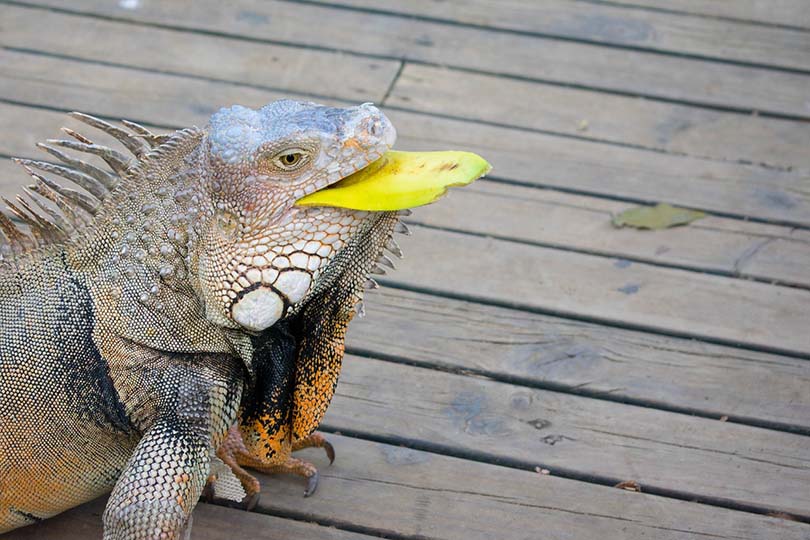
Other Foods To Watch Out For
We already talked about animal proteins and oxalate-containing foods but what other foods should you use caution when feeding to your iguana?
Some foods, like mustard greens, cabbage, and kale, contain a chemical that can impact the iguana’s thyroid gland. Like the oxalate foods, these items should only be fed occasionally and in small amounts.
Some foods should never be given to an iguana because they’re toxic. These include:
If you ever aren’t sure whether a particular food is safe for your iguana, consult your veterinarian before you feed it.
Conclusion
Feeding an iguana takes a little planning and knowledge but is ultimately one of the easier parts of caring for these large lizards. Iguanas have very specific care and habitat requirements and are best for more experienced exotic pet owners. Before you commit to bringing one home, be sure you’re ready for the responsibility and cost of iguana ownership.
See Also:








